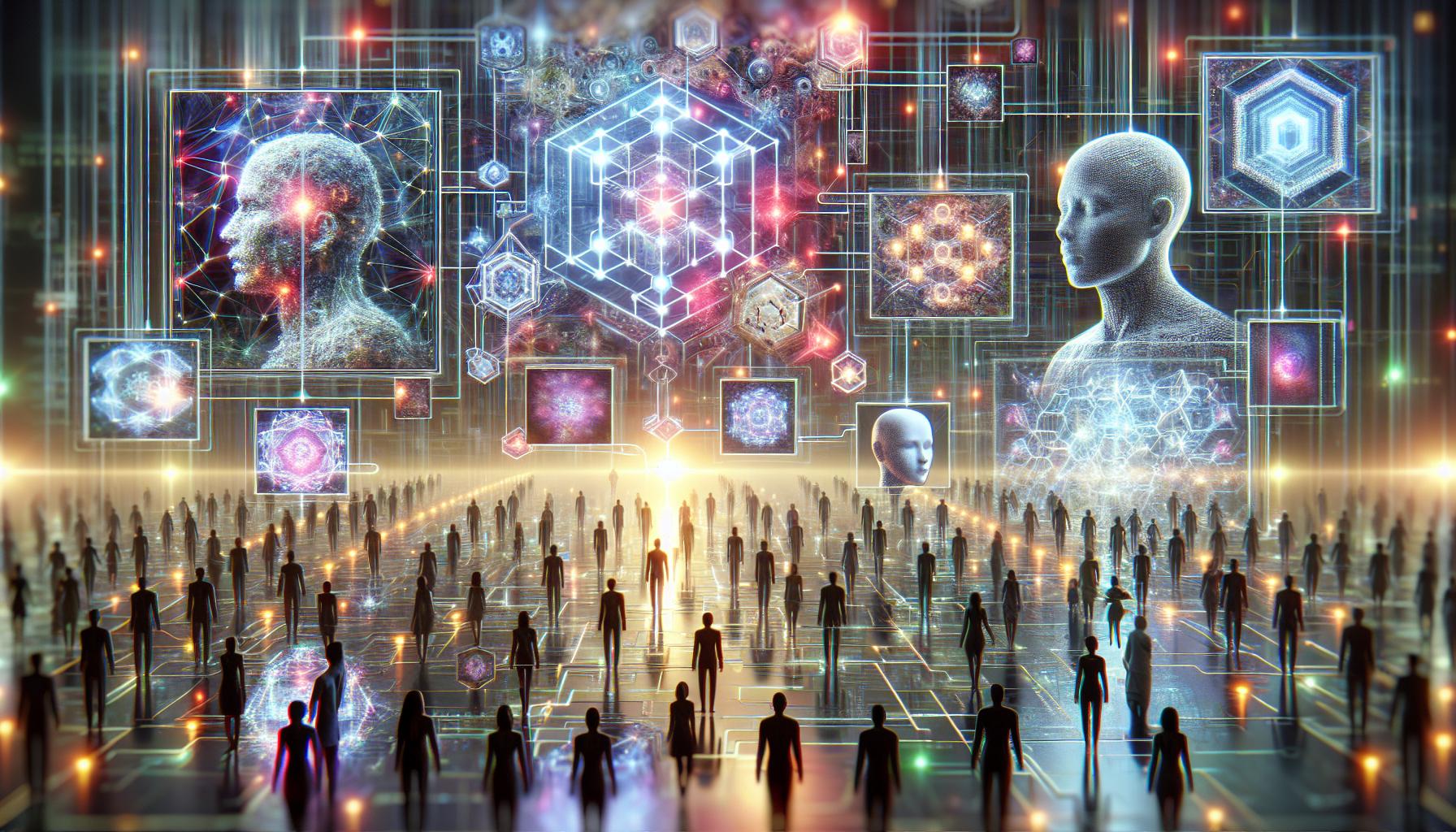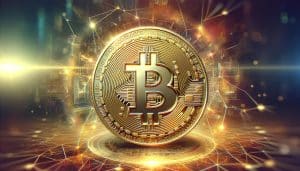Welcome to the fascinating realm of Tensor NFTs, where the worlds of blockchain technology and artificial intelligence intersect. Imagine being able to own a unique piece of AI, a concept that’s as intriguing as it is futuristic.
As you delve further into this article, you’ll uncover what Tensor NFTs are and why they’re causing such a stir in the tech world. It’s not just about ownership; it’s about the potential to reshape our understanding of AI and its applications. So, brace yourself for a thrilling exploration of this cutting-edge innovation.
Understanding Tensor NFTs
What Are Tensor NFTs?
Tensor NFTs establish themselves as a novel concept in the intersection of artificial intelligence (AI) and blockchain technology. They represent self-learning AI models embedded into Non-Fungible Tokens (NFTs). Each Tensor NFT possesses its unique AI, an exclusive data-driven model, on a blockchain network. This unique combination facilitates individuals to own, trade, and interact with AI models in ways synonymous to digital assets.
How Do They Differ From Traditional NFTs?
While traditional NFTs, like art pieces or collectibles, primarily serve as proof of ownership for digital assets, Tensor NFTs take a step further. Apart from demonstrating ownership, they enable the owner to interact with the underlying AI model, represented by the Tensor NFT.
In essence, while you merely own a traditional NFT, you can interact and train the AI model embedded within a Tensor NFT. Its value lies in not just the uniqueness of its embedded information but also in the interaction and evolution potential of the underlying AI model. For instance, ‘Blockdaemon‘, one of the leading blockchain infrastructure platforms, uses tensor NFTs to manage and organize complex blockchain networks.
The Technology Behind Tensor NFTs

Get ready to delve into the technology that powers Tensor NFTs. In this section, we’ll unpack the essentials of Blockchain technology and investigate the role Smart Contracts play in this innovative concept.
Blockchain Technology Explained
At the core of Tensor NFTs lies the powerful and transformative technology: Blockchain. As an incorruptible digital ledger, Blockchain architecture maintains transparent, secure, and tamper-resistant records of each transaction. It’s this technology that underpins the success of Tensor NFT’s like the ones used in Blockdaemon for managing complex blockchain networks.
Blockchain’s distributed nature makes it ideal for storing or tracking digital assets, such as Tensor NFTs, across a network of computers. Its decentralization eliminates the need for trust—or a middleman—between parties in the network. This system ensures the complete transparency and security of all transactions related to Tensor NFTs and provides the foundation for the unique interactions and training of the embedded AI models.
The Role of Smart Contracts in Tensor NFTs
Smart Contracts are integral to the functionality of Tensor NFTs. These self-executing contracts contain the terms of the agreement or transaction directly written into lines of code. They automatically execute and enforce the obligations of parties involved, transparently and without intermediaries.
In the case of Tensor NFTs, smart contracts incorporate the instructions that define interaction with the AI models. The code stipulates the conditions under which an owner can engage with and train their AI. It’s through these digital agreements that users can tailor and evolve their unique AI models, with the entire process tracked securely on the blockchain.
Smart contracts are also pivotal in governing the ownership, trade, and, significantly, the uniqueness of Tensor NFTs on blockchain networks. The case of Blockdaemon, mentioned earlier, is a prime example of this dynamic with Tensor NFTs. Not only do they record the ownership rights over an asset, but they also establish the rules of interaction between the owner and the AI model, cultivating an environment where Tensor NFTs can thrive.
Use Cases of Tensor NFTs
Art and Digital Ownership
Tensor NFTs revolutionize the concept of art and digital ownership. They bring a new level of tangibility to digital art. Artists can embed AI models into their work, creating dynamic, evolving pieces. For example, an artist might release a piece of art as a Tensor NFT, allowing the owner to interact and train the embedded AI model. This interaction changes the art over time, creating a unique, evolving masterpiece.
One key advantage of Tensor NFTs in art is their ability to provide undeniable proof of ownership. Like standard NFTs, Tensor NFTs are transacted on the blockchain. However, their utilization of smart contracts, similar to the use in Blockdaemon, ensures a higher level of security and transparency.
Gaming and Virtual Reality
Gaming is another significant avenue for Tensor NFTs. Traditional gaming assets can become static and lose value over time. On the other hand, tensor NFTs provide dynamic assets that become more valuable with interaction. A gamer, for instance, could own a Tensor NFT of a game character. Through gameplay, the player trains the embedded AI model, enhancing the character’s abilities and, in turn, the NFT’s inherent value.
Virtual reality (VR) stands to benefit from Tensor NFTs as well. Imagine owning a virtual plot of land as a Tensor NFT. Through interaction, you train the AI model, affecting the environment and the behaviors of AI creatures within it. The more you interact, the more unique and valuable the NFT becomes.
Through these innovative applications in art and gaming, Tensor NFTs unlock a realm of possibilities within the digital ownership space, propelling us closer to a truly interactive and personalized digital universe.
The Future of Tensor NFTs
Tensor NFTs, as a combined force of AI and blockchain technology, present a novel approach to the Non-Fungible Tokens (NFT) sector. Through Tensor NFTs, AI models can not only be owned but also trained and interacted with, thus providing a unique amalgamation of intelligence and value.
Moving forward, here are some anticipated trends and challenges in the Tensor NFTs market space.
Predicting Market Trends
Market trends concerning Tensor NFTs suggest an upward trajectory. As a user, you might have noticed the increasing utilization of Tensor NFTs in sectors like gaming and virtual reality. These sectors stand to benefit remarkably from the evolutionary capabilities of Tensor NFTs.
Moreover, the already evident practical applications, such as Blockdaemon’s use for managing blockchain networks, predict broadened applicability. As this technology adopts maturity, you can expect a surge in its use in diverse arenas including but not limited to digital arts, digital ownership, and personalized digital universe interactions.
Let’s not discount the role of AWS Blockchain in ensuring the requisite transparency and security for these applications. As Tensor NFTs propagate, you could also see enhanced integration with existing platforms, such as the integration with Solana Pro to foster quicker and more efficient transactions.
Challenges and Opportunities Ahead
Understanding the challenges ahead is crucial to identifying opportunities. One fundamental challenge for Tensor NFTs involves managing and governing the capacity of AI’s self-learning. The solution currently lies with smart contracts, but as potential for mischief exists with evolving AI, advanced measures may be necessary.
An opportunity that stems out of this challenge is the enhancement in the role of platforms like Blockdaemon. Blockdaemon, by managing blockchain networks, can bring about a notable change in handling the security challenges presented by Tensor NFTs.
Furthermore, there’s opportunity in the integration with platforms like Solana Pro that offer speedy transaction confirms. The integration of such platforms can enable Tensor NFTs to reach wider audiences and create more robust digital marketplaces.
Lastly, as Tensor NFTs adopt maturity and more use cases come to surface, it’s safe to anticipate the growth of related technologies and platforms such as AWS Blockchain and marginfi. In parallel, you may see the steady rise of related cryptocurrencies like Radium Crypto to underpin these developments.
Conclusion
You’ve now navigated the innovative world of Tensor NFTs. This fusion of AI and blockchain is not just a fascinating concept – it’s a game-changer. It’s allowing ownership and interaction with self-learning AI models, pushing the boundaries of what we thought was possible. With platforms like Blockdaemon and Solana Pro, the scope for security and efficiency is immense. And as this technology matures, we can expect to see even more integration with platforms such as AWS Blockchain and marginfi. The rise of cryptocurrencies like Radium Crypto further supports these advancements. Of course, there are challenges to overcome, especially in governing the evolving AI capacity. But with smart contracts in place, these hurdles are far from insurmountable. So, as we step into the future, Tensor NFTs are set to revolutionize sectors from gaming to digital arts. It’s not just about owning digital assets – it’s about shaping their evolution.
What are Tensor NFTs?
Tensor NFTs are a unique combination of AI and blockchain technology that allow users to own and interact with self-improving AI models. Unlike traditional NFTs, these can be trained further to increase their value over time.
How is Blockdaemon related to Tensor NFTs?
Blockdaemon is an application of Tensor NFTs, used to manage blockchain networks. It showcases the potential of Tensor NFTs in real-world scenarios by leveraging their AI capabilities.
How do Tensor NFTs ensure security and transparency?
Tensor NFTs utilize Blockchain technology to ensure transparency and security. Smart contracts govern the interactions with AI models, thus maintaining a reliable and safe environment for users.
What are the potential applications and trends of Tensor NFTs?
Anticipated trends suggest Tensor NFTs will see growth in sectors such as gaming, virtual reality, and digital arts. The maturing of Tensor NFTs may also lead to integration with platforms like AWS Blockchain and marginfi.
What are the challenges and opportunities in the Tensor NFTs market?
The core challenge lies in governing the evolving capacity of AI models. This is addressed through smart contracts. Opportunities are abundant in platforms like Blockdaemon and Solana Pro, which offer enhanced security and efficiency for Tensor NFTs.
How are cryptocurrencies like Radium Crypto related to Tensor NFTs?
As Tensor NFTs advance, they are expected to encourage the rise of related cryptocurrencies like Radium Crypto. These cryptocurrencies may support the further development and application of Tensor NFTs in various sectors.








